Condenser Dryer vs Vented Dryer vs Heat Pump – What Is the Best Option?
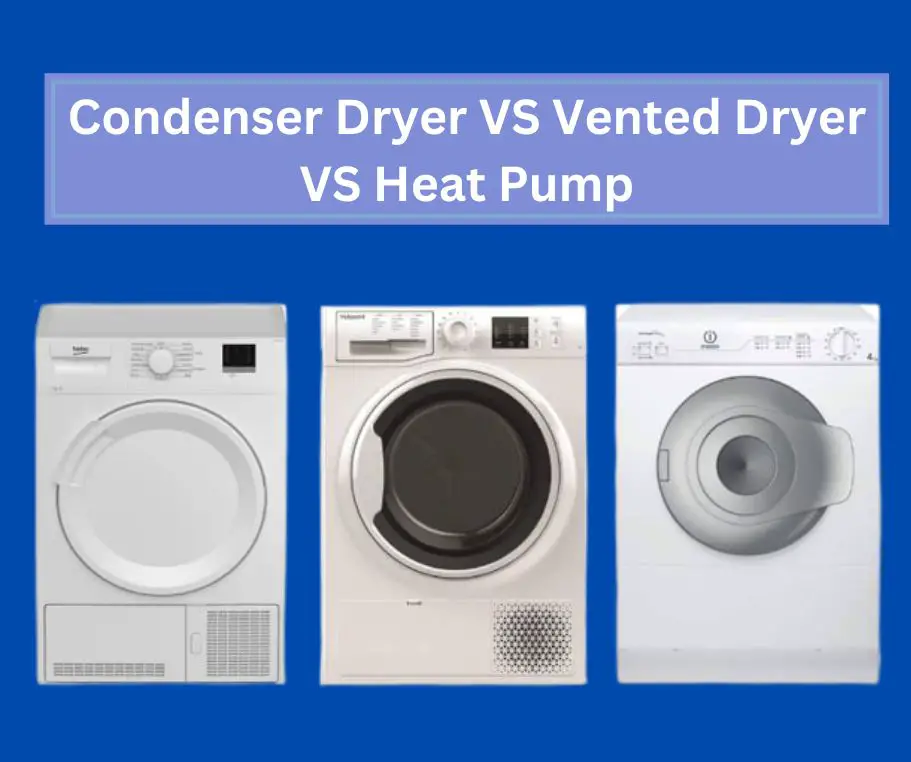
Before buying a dryer, it’s important to know the difference between the variety of options on the market. They include condenser, vented, and heat pump dryers.
You should seek a dryer that minimizes energy consumption and drying time. Clothes dryers that use vents to release the hot air from the tumble drum are called vented dryers.
Condenser dryers function in the same way but without a vent. Heat pump dryers, which use a refrigerant in a closed-loop heat exchange, are another option for drying clothes.
Using the information in this article, compare the three choices and think about what’s ideal for you. That will help you make an informed final decision.
Overview Of Condenser Dryer vs. Vented Dryer vs. Heat Pump
The three most common types are condensers, heat pumps, and vented dryers. The various models of this equipment diverge from one another in the manner of hot air extraction.
Condenser dryers turn the heat from the exhaust into water that the user can throw away, unlike vented dryers, which release heat through the chimney. The opposite is true for heat pump tumble dryers, which recycle hot air to reduce energy use.
Quick Facts Comparison Table
Condenser Dryers |
Vented Dryers |
Heat Pumps |
Fairly affordable |
Very affordable |
Expensive |
Blow air through a heating element |
Blow air through a heating element |
Expel hot air through an external vent |
More energy efficient, cheaper to buy and run |
Energy efficient |
The most energy-efficient option |
What Is a Condenser Dryer?
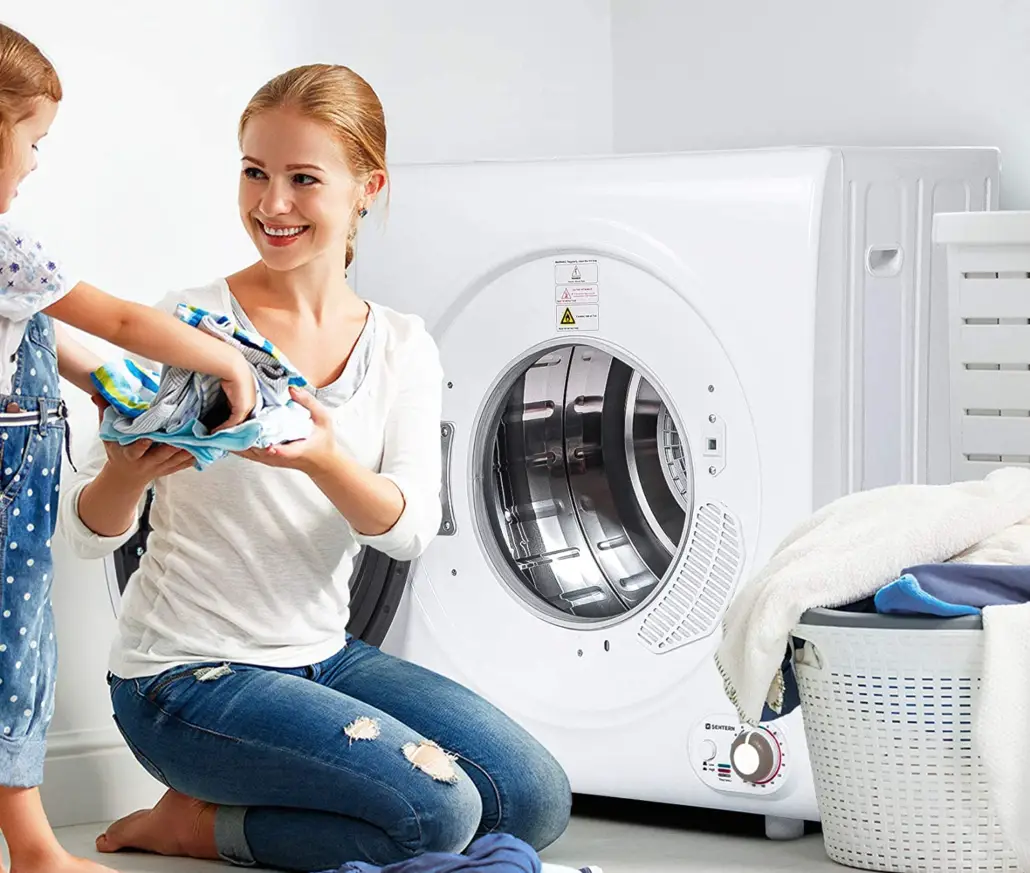
Clothes dryers that use condensation to dry the laundry are called condenser dryers. The clothes in the tumble dryer are dried by a blast of air over a heating coil and into the drum.
The condenser pulls moist air from the laundry and cools it, which causes the water to collect in the reservoir.
Drying clothes in one of these dryers is easier with a water tank. Once the cleaning cycle is complete, a hose removes the accumulated water.
Key Features of a Condenser Dryer
Condenser dryers use the least energy because they reuse the hot air they make while drying. Still, they also tend to be the slowest to run. That is starting to change as newer models give software faster processing speeds.
As with other home appliances, the best models of tumble dryers tend to be more expensive. That is especially true if they have special features like smartphone control or extra programs.
Overall, they are the quietest dryers and the gentlest on clothes because of the lower temperatures they use.
Pros of a Condenser Dryer
- They don’t need exterior venting. Condenser dryers drain moisture through a hose into a collection tank to get rid of moisture, so they don’t need an outside vent. Because of this, you can put the dryer anywhere, including on an interior wall.
- They are fast. Condenser dryers raise the temperature to between 158 and 167 degrees Fahrenheit (70 and 75 degrees Celsius). If you’re in a hurry, you’ll appreciate how fast your clothes dry when the temperature is high.
- They are affordable. When compared to their heat pump counterparts, condenser dryers are quite affordable.
Cons of a Condenser Dryer
- The water tank needs regular maintenance. You must drain the collected water every time the dryer finishes a cycle. It may even overflow if you don’t empty the dryer after use.
- Its water tank can grow moldy. Mold can grow and spread to your clothes if the hamper isn’t regularly emptied and cleaned.
- They consume more energy. Condenser dryers, like vented dryers, need air blown over a heating element. As a result, their full-load energy consumption is roughly 5.2 kilowatts per hour (kWh), making them less efficient than heat pump dryers.
What Is a Vented Dryer?
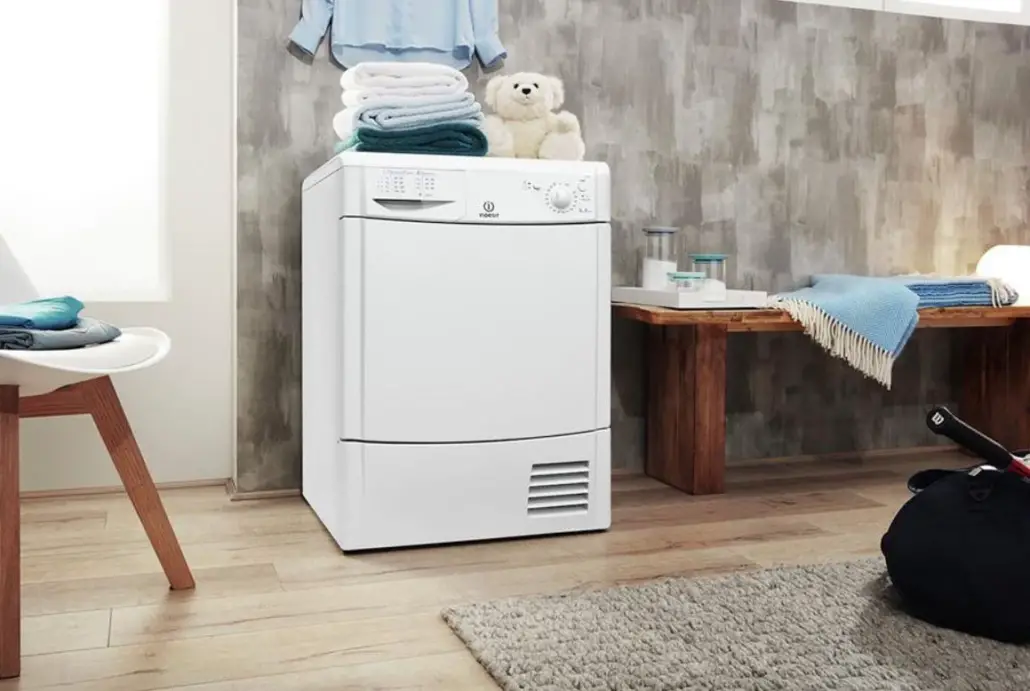
Vented dryers are popular because they’re simple to access. Today, these dryers are the standard in most households. They warm the air from the surrounding area before using it to dry clothes.
Next, a drum containing the garments rotates while heated air is blown through it.
The hot air dries the clothes in the drum, and the moisture is then released from the dryer via a vent. Dryers with exhaust vents are more affordable than their condenser and heat pump counterparts.
Key Features of a Vented Dryer
Vented dryers are more cost-effective than condenser dryers, which convert moisture to a different form before release. Compared to a condenser dryer, a vented dryer’s full-load energy consumption is only about a fifth of what it would be.
However, a super energy-efficient dryer with a heat pump can further improve this efficiency. Vented dryers are reliable and easy to maintain because you don’t have to manually empty the water.
Pros of a Vented Dryer
- Their price makes them very affordable. You can buy a vented dryer for as low as $150.
- The drying time in a vented dryer is only 45–50 minutes, making it the most time-efficient option.
- Ventilated dryers are more convenient than other dryers because you can hang them on the wall.
- Condenser dryers need regular draining, but vented dryers can go much longer without draining. That way, you can relax, knowing that the water won’t seep into the laundry room and ruin your appliances and flooring.
Cons of a Vented Dryer
- You cannot install it anywhere. A dryer that vents moisture outward must be placed near an exterior wall.
- A vented dryer’s outside air may be full of allergens and dust. Those who suffer from allergies or asthma may experience difficulty.
- Vented dryers are less efficient than heat pump dryers because they release hot air outside.
- A vented dryer’s highest temperature is 85 degrees Celsius, which is too high for most fabrics and can damage them.
What Is a Heat Pump?

A heat pump is used for both heating and cooling. It is usually put in the yard or somewhere else outside. Not only can it heat your home, but it can also cool it in the same way that a central air conditioner would.
You can use an air-to-air heat pump to heat your home in the winter by transferring heat inside from outside. It can also cool your home by removing heat from the inside air during the summer.
Because it does not convert heat into liquid but rather vents it outside, this device does not impact the cost of running the home’s HVAC system. Vented tumble dryers save power, but heat pump tumble dryers are even more efficient.
Key Features of a Heat Pump
As far as operating costs go, heat-pump dryers are the most economical. Although they have the highest purchase price, they are also the most valuable. Tumble dryer users, in particular, will find them to be an ideal long-term solution.
Dryers with a heat pump reuse the heat generated, much like condenser dryers, but with a water tank. They work like refrigerators and air conditioners, but like condenser dryers, they don’t have a heating coil.
Pros of a Heat Pump
- Heat pump dryers are more efficient than vented and condenser dryers because they reheat air from the drum.
- Heat pump dryers last much longer than their vented and condenser counterparts. Because dryers’ heating elements are a common failure point, these models are much less likely to need repair.
- Heat pump dryers come in various sizes, making them ideal whether you have a small or large family.
- Since heat pump dryers can only get up to 122 degrees Fahrenheit (50 degrees Celsius), they are safe for any fabric.
Cons of a Heat Pump
- Heat pump dryers have a higher initial investment than condenser and vented dryers.
- Because they work at cooler temperatures, heat pump dryers take longer to dry clothes than other dryers. Drying time with a heat pump dryer is typically three times as long as with a vented or condenser dryer.
- Similarly to condenser dryers, heat pump dryers need to be drained after each use.
How Do They Compare in Price?
In most cases, a condenser dryer will cost you $200 to $300 more than a vented dryer. Part of this is that vented dryers have fewer features and need more maintenance than other types. They also require professional installation and have lower operating costs.
On the other hand, heat pump dryers cost between $200 and $500 more than condenser dryers. Savings on energy costs will offset this over time.
How Do They Compare on Installation
A vented dryer should be set up by a professional in a well-ventilated room to stop mold from growing on the walls and ceiling. It is important to put the dryer in a well-ventilated area where hot air can easily escape.
With a condenser tumble dryer, you can dry your clothes at temperatures as high as 70–75 °C. Alternatively, a heat pump tumble dryer tops out at only 50 °C.
How Do They Compare on Efficiency
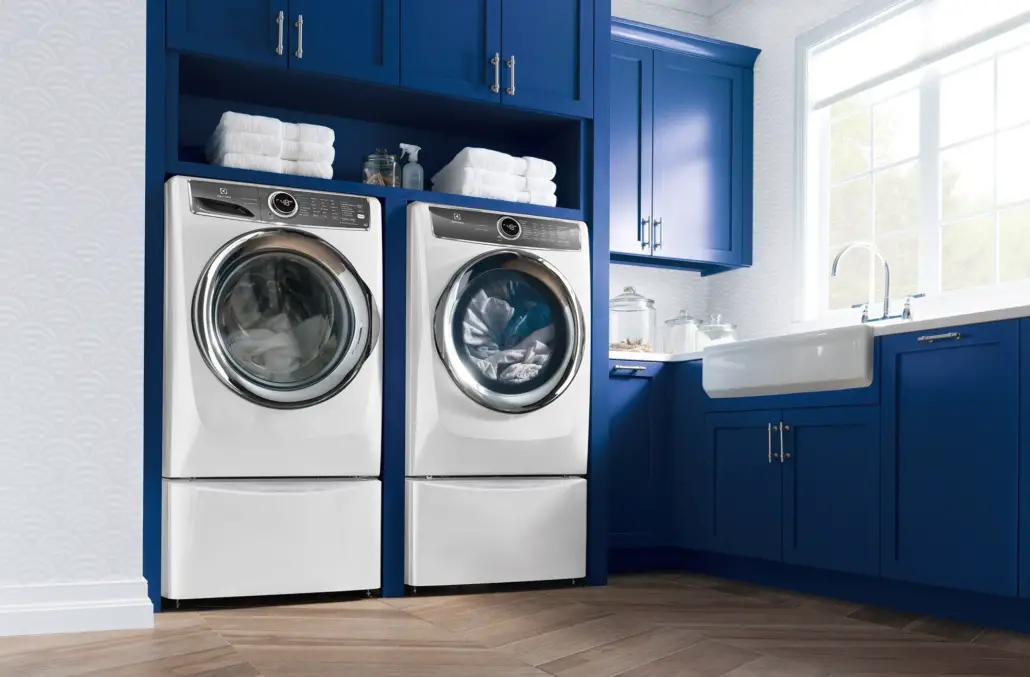
Heat pump dryers are the most energy-efficient option because of their ability to reheat and recycle used heat. They consume significantly less energy per load than condenser dryers.
On average, a condenser dryer will use 3 kWh for each load, whereas a heat pump dryer will use only approximately 1.5 kWh.
Who Should Use a Condenser Dryer?
Many individuals find that the convenience and portability of condenser dryers make them well worth the cost. A 220-volt outlet anywhere in the home or apartment is all you need to use them.
Also, they are perfect for folks who don’t have vents in their laundry rooms or use semi-outdoor washing machines.
Who Should Use a Heat Pump?
A heat pump is an excellent investment for almost any home. The decision becomes clear if you do the math and compare the prices of natural gas and electricity, the environmental impact, and monthly energy payments.
Who Should Use a Vented Dryer?
Try this if you want high-quality drying results without breaking the bank. Consider a vented model if you’re on a tight budget and your home has an exterior wall that can serve as a vent.
Best Condenser Dryer – Mini Review With Pros and Cons
Hotpoint Freestanding H2D81W 8KG Condenser Tumble Dryer
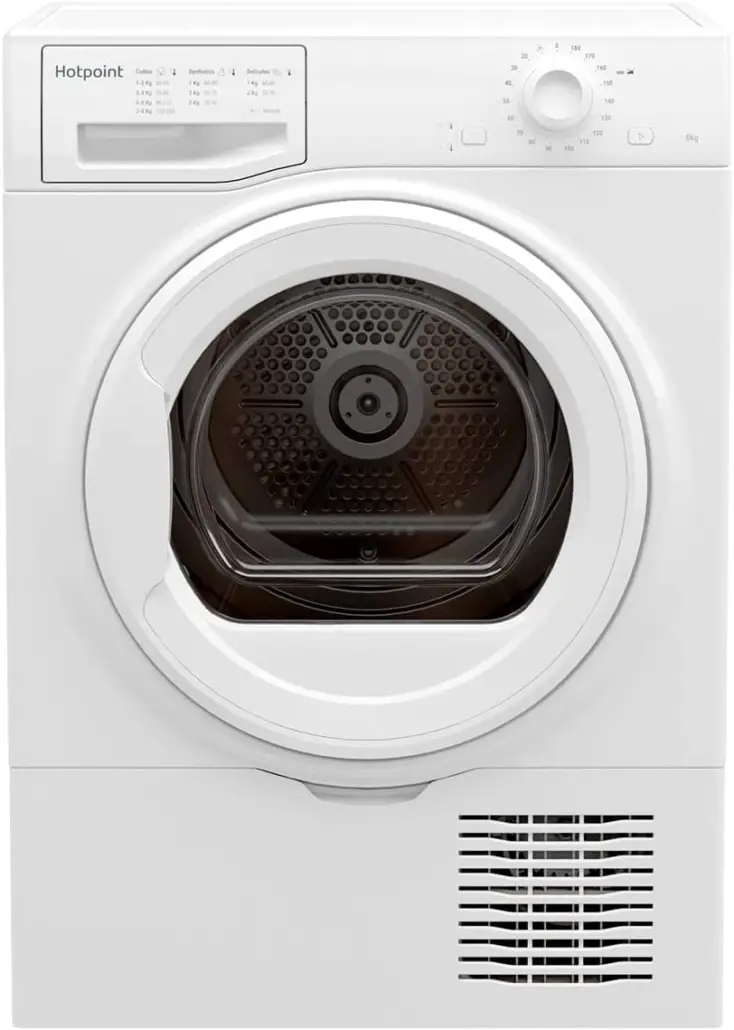
The B-rating results from the optimal temperature thermostat on this freestanding tumble dryer. Its key features include a refresh program, an easy-to-empty filter, and a condenser dryer.
Your priceless items will remain suspended in midair thanks to this and a unique drum that mimics wave motion with lifters. On the downside, some users say it is noisy.
Best Heat Pump Dryer – Mini Review With Pros and Cons
Samsung 4.0 CU FT Heat Pump Dryer

The low price, high efficiency, and simple installation of this dryer are just a few of its many benefits. It also dries quickly and quietly compared to other dryers.
Its low operating costs and easy installation make it incredibly cost-effective. On the downside, its maintenance is quite expensive.
Best Vented Dryer – Mini Review With Pros and Cons
Splendide DV6400X Front Load Stackable Vented RV Dryer
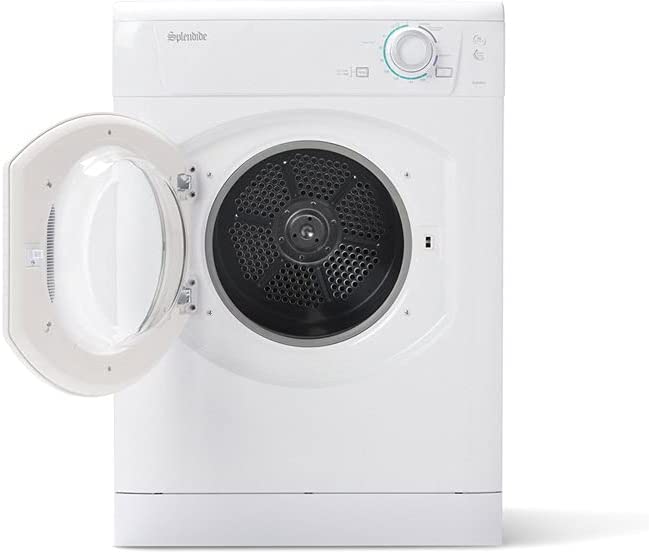
The RV-ready stackable dryers from Splendide have the largest dryer drums, circuitry, and parts that can withstand wear and tear. The best things about the dryer are its advanced auto-balance system, advanced floor protection assurance, and quiet operation.
Fabrics last longer and experience less wear thanks to the dryer’s bidirectional rotation. At two years, this warranty is the longest in the business.
FAQs
Q: Are Heat Pump Dryers Vented or Condenser?
One might think of a heat pump dryer in the same vein as a condenser dryer. Drying your clothes uses a heat pump to dehumidify the air. Condensation is reduced by cooling the warm, moist air, which is then heated and reused to dry your clothes.
While condenser dryers collect the moisture from the hot air and release it to the user, vented dryers release the heat outside. The opposite is true for heat pump tumble dryers, which recycle hot air to reduce energy use.
Q: Which Is Better, a Vented or Condenser Dryer?
A condenser dryer is ideal if you want a machine that can adapt to your needs and has all the features you could want in a dryer. While these models are kinder to your clothes, invest in an energy-efficient one to prevent future expenses.
Q: What’s the Difference Between a Heat Pump Dryer and a Vented Dryer?
In contrast to a condenser and a vented tumble dryer, a heat pump tumble dryer reuses the hot air from the drum instead of venting it outside. As a bonus, it will dry your clothes at a safer temperature.
Q: What Are the Disadvantages of a Heat-Pump Tumble Dryer?
Since heat pump dryers dry at a lower temperature, the process takes more time. Additionally, they are more costly than competing dryer models.
Q: Do Heat Pump Dryers Cause Mold?
They are created to hold as much water as possible, thereby lowering the likelihood of condensation and mold. However, suppose you live in a humid environment, such as a coastal area or during the summer.
If that’s the case, you’re more likely to see water droplets gathering near the condensing coils, a favorable condition for mold.
Q: Is a Heat Pump Dryer Worth the Extra Money?
Because of their innovative reheating and recycling technology, heat pump dryers are among the most energy-efficient options on the market. You’ll save a great deal of money because this model uses less than half the energy of typical vented electric dryers.
Q: Are Vented Tumble Dryers Being Phased Out?
Newer dryers, like condenser and heat pump dryers, are replacing older ones, like vented tumble dryers. Dryers that exhaust steam from the wall, window, or door require special installation.
Q: Do Heat Pump Dryers Need a Drain?
Heat pump dryers don’t need vents but must be drained. To dispose of the water, either connect a hose to a drain or use a built-in catch, both of which can hold enough water for two cycles.
Q: Do Heat Pump Dryers Work in Cold Weather?
The heat pump dryer will not function if the room is too cool. The air entering the dryer will also get chilled when it’s cold outside. As a result, clothing may take longer to dry or may come out damp.
A regular dryer or a clothesline is the best way to dry clothes in a cold place.
Conclusion
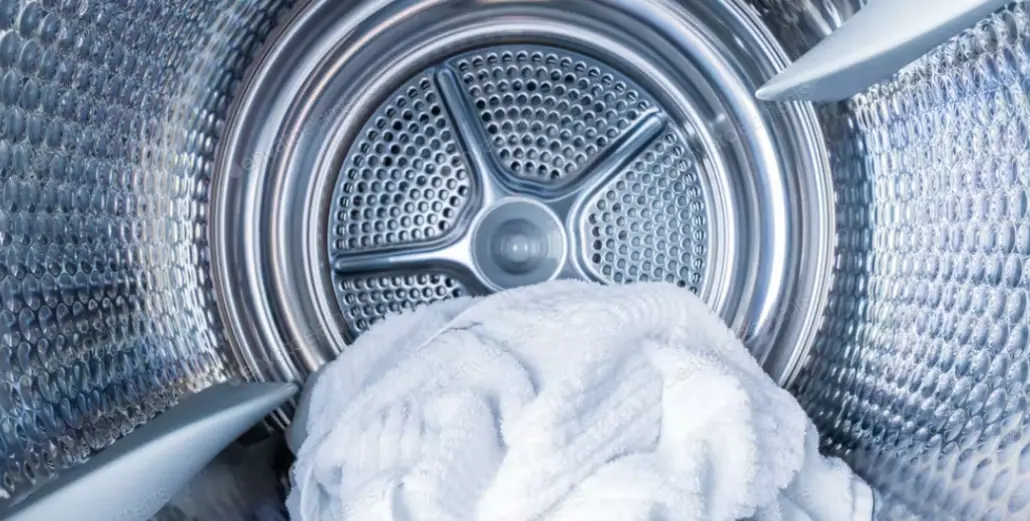
Drying appliances that use a vent, condenser, or heat pump are currently the most popular option. Regardless of your choice, ensure that its drying efficiency and energy consumption meet your needs.
To get your money’s worth, you should also consider the price, among other important factors.


